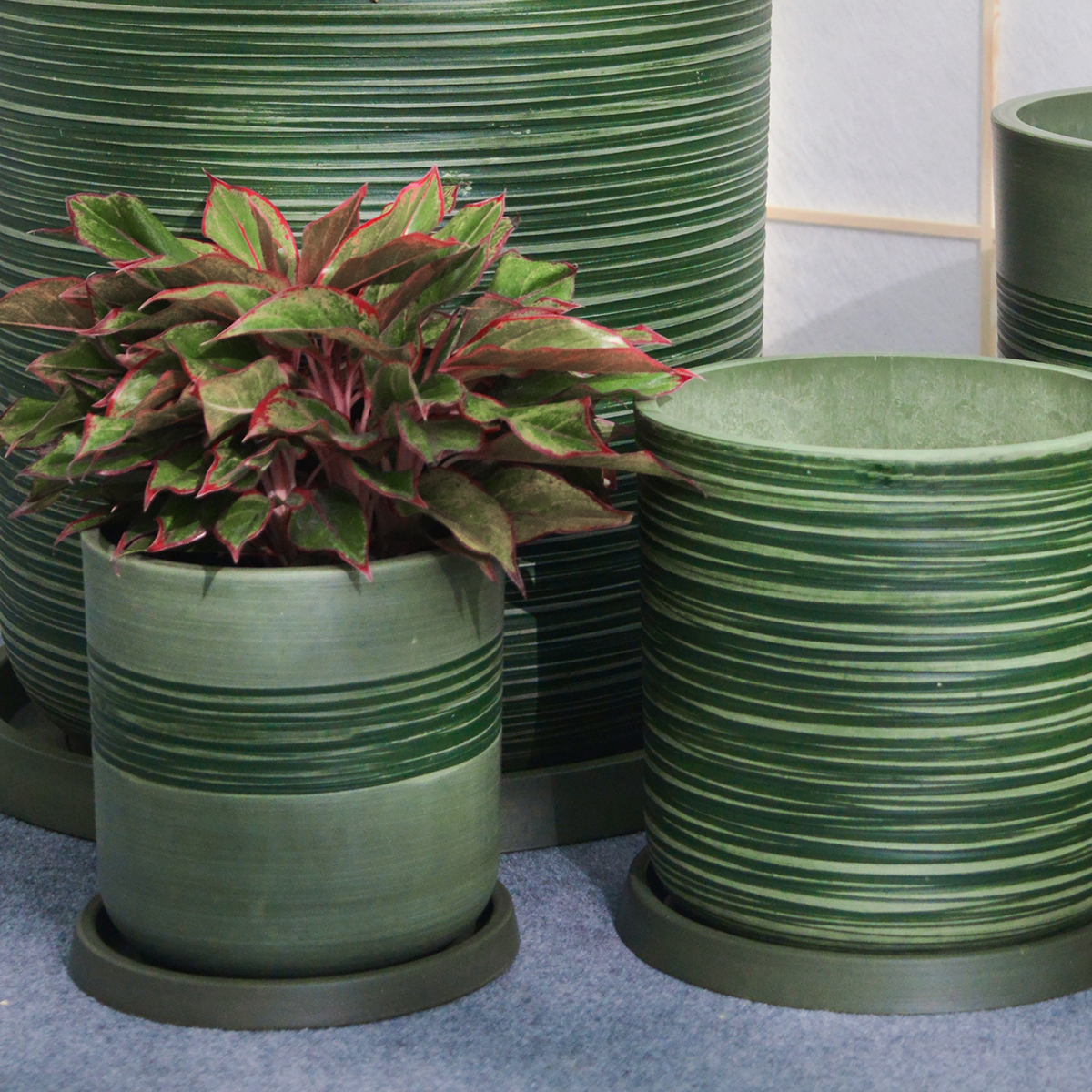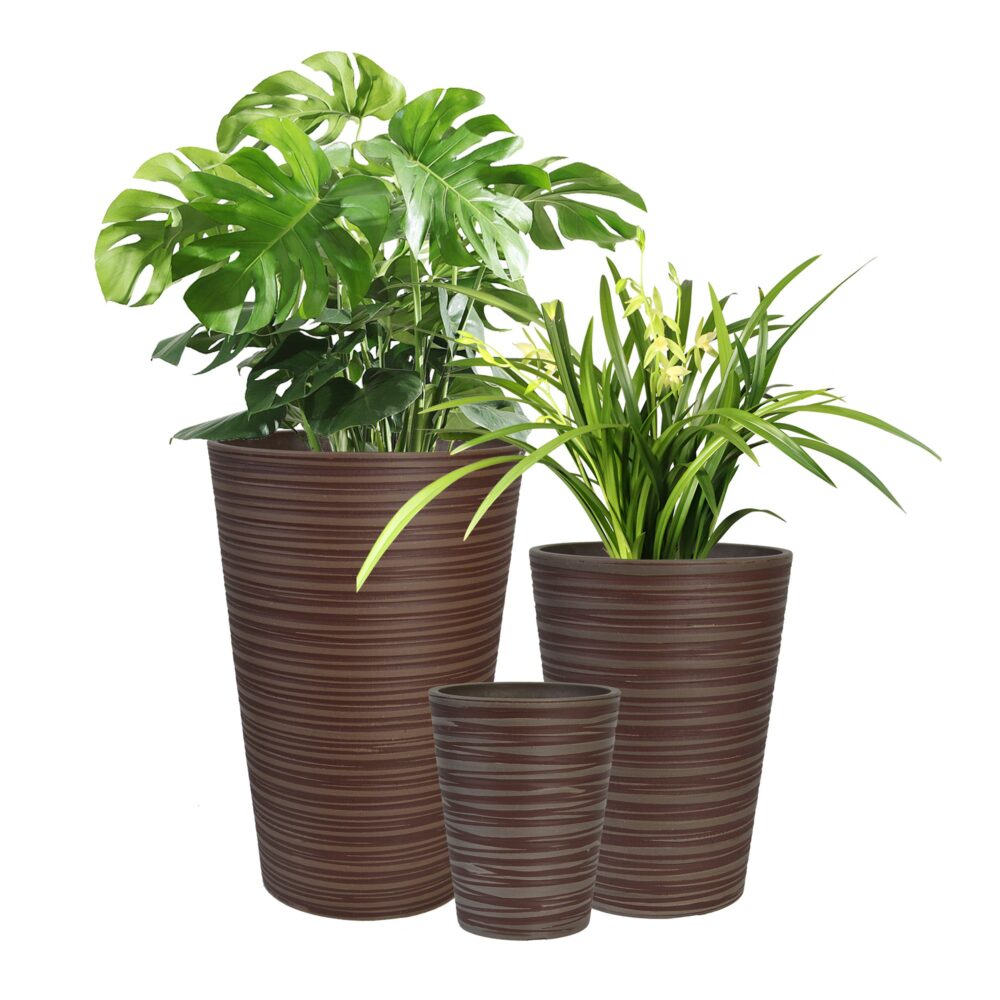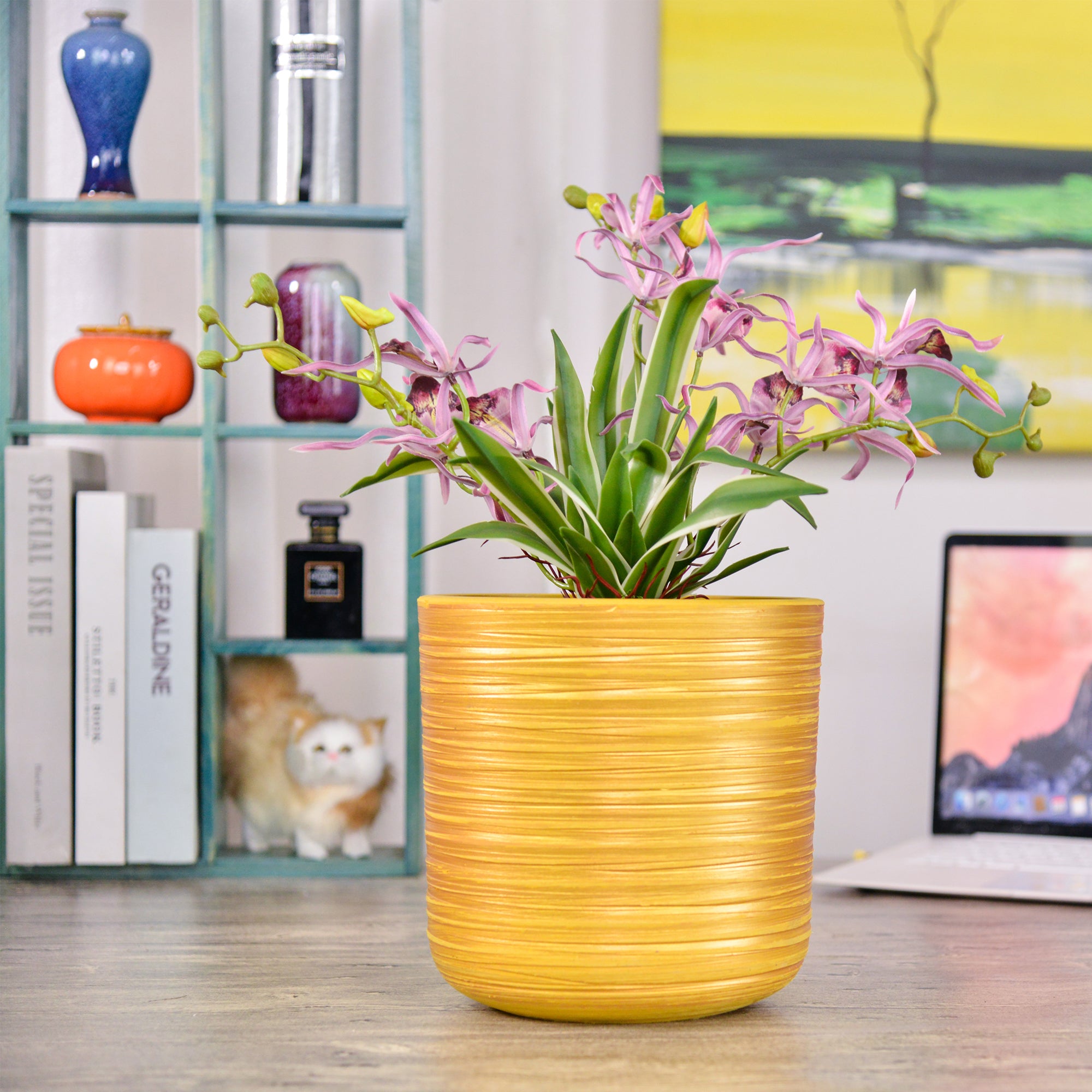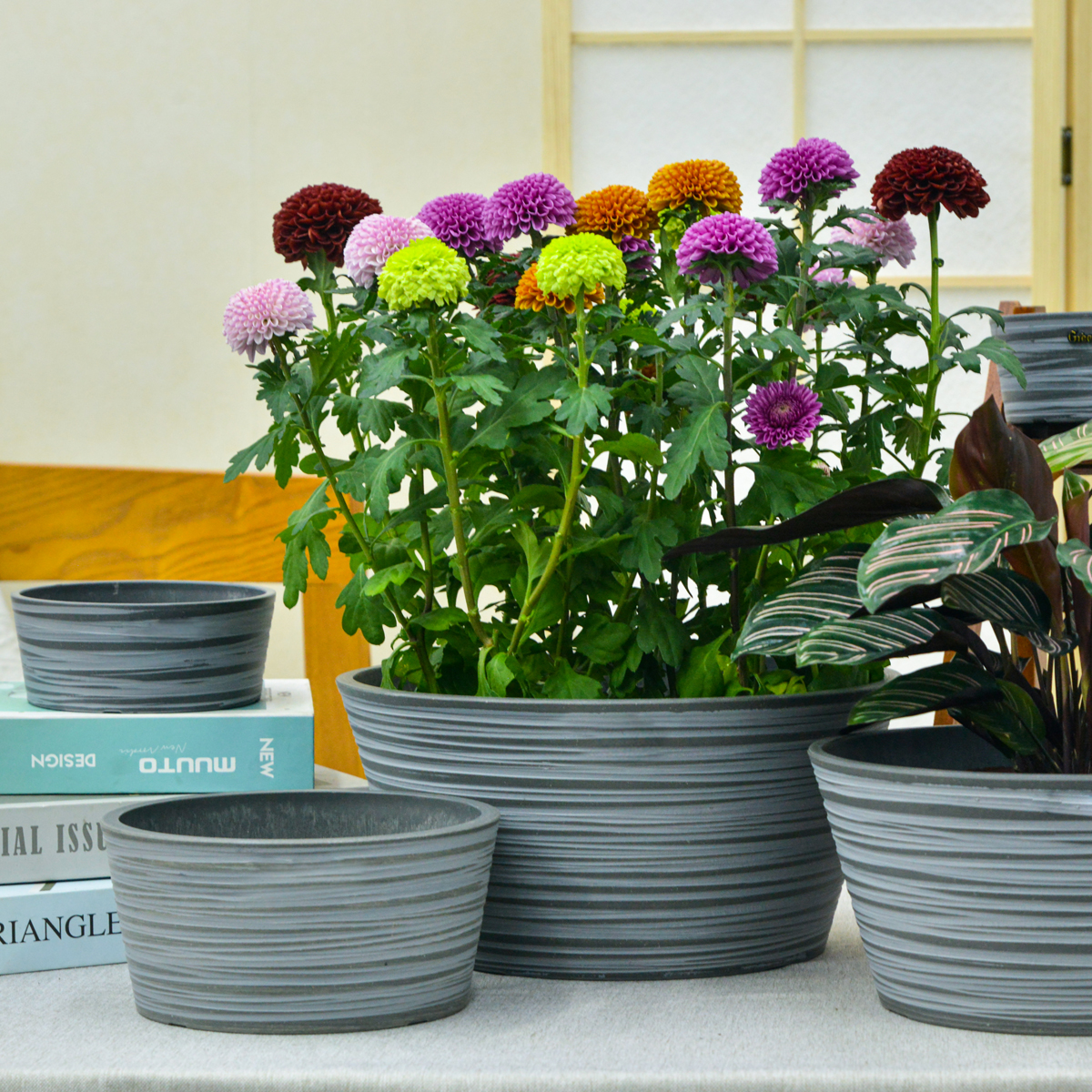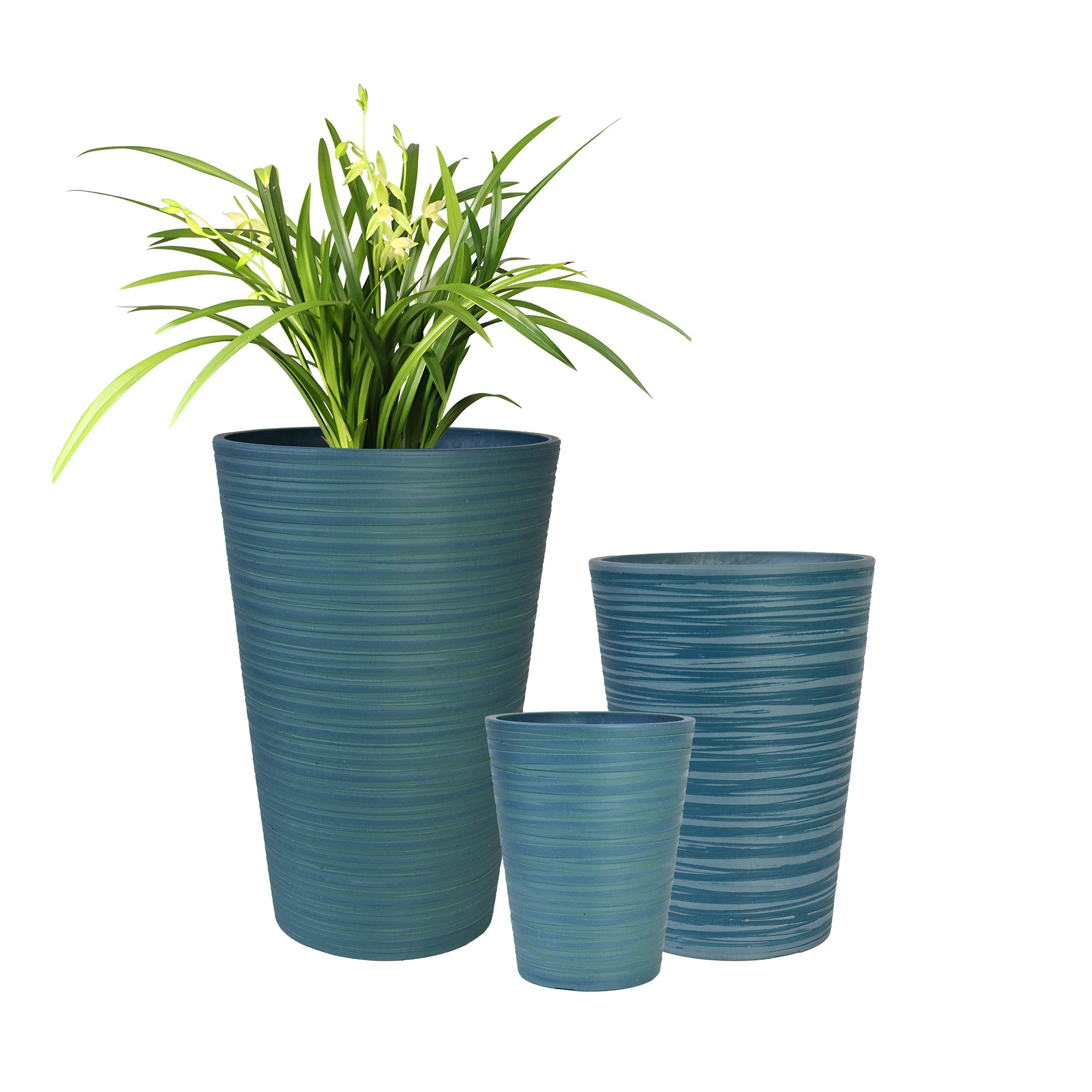What Are the Common Types of Garden Containers? What Types of Plants Are Best Suited for Each?
Container gardening is a versatile and rewarding way to grow a wide variety of plants, regardless of the size of your outdoor space. From sprawling suburban yards to small city balconies, the right container can transform any area into a vibrant garden. But with so many options available, it can be tricky to know which type of container is best suited for your plants. Let’s explore some common garden container types and the plants that typically thrive in them.

Common Types of Garden Containers and Suitable Plants:
- Flower Pots: These are individual containers, typically round or slightly tapered, with drainage holes at the bottom. They come in various sizes and materials like terracotta, plastic, ceramic, and metal.
- Best Plants: Flower pots are ideal for individual plants or small groupings. Think annual flowers like geraniums, petunias, marigolds, and zinnias. They also work well for herbs like basil, rosemary, and thyme, as well as smaller vegetables like peppers and patio tomatoes. Dwarf shrubs and small trees can also thrive in larger pots.
- Planters: Generally larger than individual pots, planters often come in rectangular or square shapes and offer more soil volume. They can be made from wood, plastic, concrete, metal, or composite materials.
- Best Plants: Planters are great for creating mixed plantings with a combination of “thrillers” (tall focal plants), “fillers” (mounding plants), and “spillers” (trailing plants). They can also accommodate larger vegetables like tomatoes, eggplants, and bush beans, as well as groups of herbs or smaller shrubs.
- Hanging Baskets: Designed to be suspended from hooks or brackets, hanging baskets are perfect for adding vertical interest and showcasing trailing plants. They often have coco coir liners or wire frames.
- Best Plants: Trailing annual flowers like petunias, calibrachoa (Million Bells), lobelia, and verbena are classic choices. Vining plants like ivy, creeping Jenny, and sweet potato vine also thrive in hanging baskets. Cascading herbs like trailing rosemary or thyme can add both beauty and functionality.
- Window Boxes: Long, narrow containers specifically designed to sit on window ledges or railings. They add charm and color to homes and can be made from wood, plastic, or metal.
- Best Plants: Compact annual flowers like begonias, impatiens, pansies, and snapdragons are well-suited for window boxes. Herbs like parsley, chives, and oregano also do well. You can even grow small vegetables like lettuce, radishes, and strawberries in window boxes.
- Raised Beds: Enclosed garden areas built above ground level, typically made from wood, metal, or concrete blocks. They offer excellent drainage and allow for customized soil mixes.
- Best Plants: Raised beds are fantastic for growing a wide variety of vegetables, including tomatoes, peppers, cucumbers, carrots, lettuce, and herbs. They also work well for growing cut flowers like zinnias, cosmos, and sunflowers, as well as strawberries and other berries.
- Troughs: Long, narrow, and often deep containers, traditionally made of stone or concrete but also available in other materials. They are often used for creating miniature landscapes or showcasing collections of plants.
- Best Plants: Troughs are ideal for alpine plants, succulents, and herbs that prefer well-draining soil. Dwarf conifers and small flowering shrubs can also thrive in troughs, providing year-round interest.
- Buckets and Repurposed Containers: With a little creativity and attention to drainage, many household items like buckets, tubs, tires, and even old watering cans can be repurposed into unique garden containers.
- Best Plants: The suitability of these containers depends largely on their size and the drainage holes you can create. They can often be used similarly to individual flower pots for annual flowers, herbs, or small vegetables.
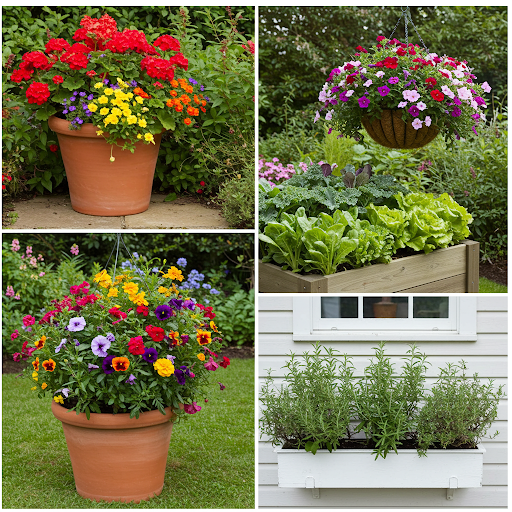
General Considerations for Container Gardening:
No matter the type of container you choose, remember these key factors for successful container gardening:
- Drainage: Ensure all containers have adequate drainage holes to prevent waterlogging.
- Soil: Use a high-quality potting mix specifically formulated for containers, as garden soil can become compacted and not drain well in pots.
- Watering: Container plants tend to dry out faster than those in the ground, so regular watering is essential.
- Sunlight: Choose plants that are suited to the amount of sunlight your container garden receives.
By understanding the different types of garden containers and the plants that thrive in them, you can create a beautiful and productive container garden that suits your space and style.
KC2-21G
By greenship|2024-08-13T06:19:08+00:00August 13, 2024|Categories: Hand-carving Series|
Modern Plant Pots with Drainage – Indoor & Outdoor Use (6″ Widths)
By greenship-seo|2025-04-10T06:29:43+00:00February 6, 2025|Categories: Hand-carving Series|Tags: Decorative Flower Pots|
Modern Plant Pots丨Planter for Indoor Plants,8 inch or 10 inch Plant Pots with Drainage Hole,Decorative Flower Pots
By greenship-seo|2025-04-10T08:32:55+00:00January 7, 2025|Categories: Hand-carving Series|Tags: Decorative Flower Pots, Self-Watering Pots|
KC3-09k
By greenship|2024-08-16T06:24:36+00:00August 16, 2024|Categories: Hand-carving Series|
11THD
By greenship|2024-08-13T02:52:20+00:00August 13, 2024|Categories: Hand-carving Series|
Planter 6 in W / 8 in W / 12 in W Indoor or Outdoor Plants, Modern Decorative Plant Pots with Drainage Hole, Decorative Flower Pots
By greenship-seo|2025-02-06T13:43:53+00:00January 16, 2025|Categories: Hand-carving Series|Tags: Decorative Flower Pots|

